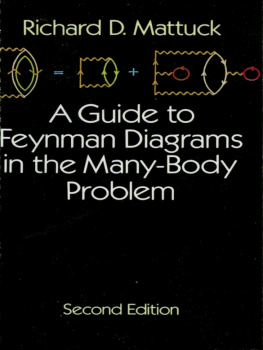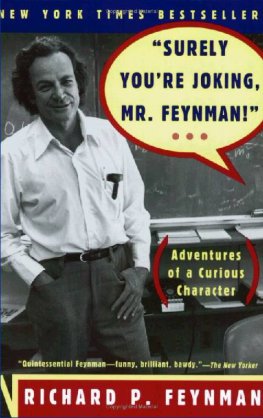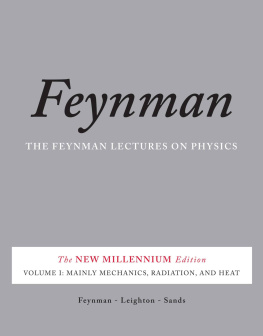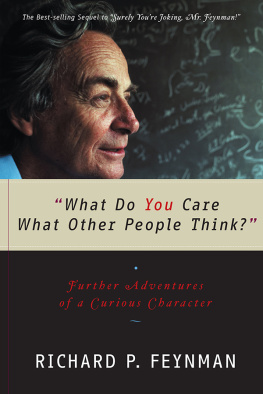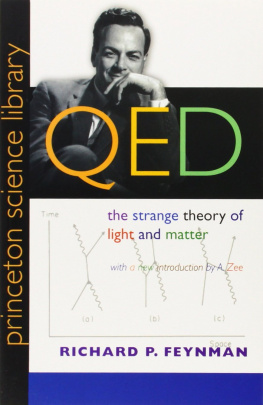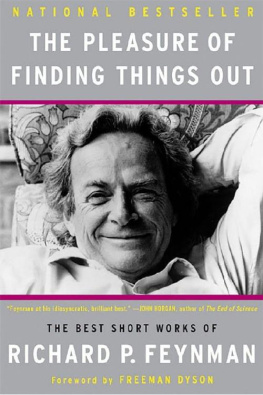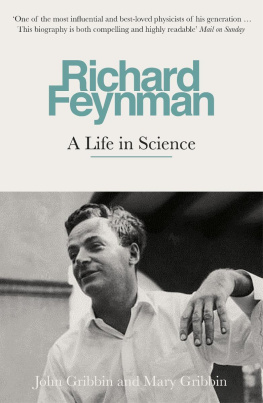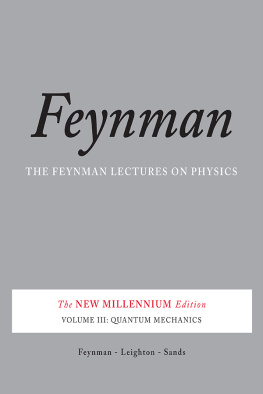Mattuck - Guide to Feynman Diagrams in the Many-Body Problem
Here you can read online Mattuck - Guide to Feynman Diagrams in the Many-Body Problem full text of the book (entire story) in english for free. Download pdf and epub, get meaning, cover and reviews about this ebook. year: 2012, publisher: Dover Publications, genre: Children. Description of the work, (preface) as well as reviews are available. Best literature library LitArk.com created for fans of good reading and offers a wide selection of genres:
Romance novel
Science fiction
Adventure
Detective
Science
History
Home and family
Prose
Art
Politics
Computer
Non-fiction
Religion
Business
Children
Humor
Choose a favorite category and find really read worthwhile books. Enjoy immersion in the world of imagination, feel the emotions of the characters or learn something new for yourself, make an fascinating discovery.
Guide to Feynman Diagrams in the Many-Body Problem: summary, description and annotation
We offer to read an annotation, description, summary or preface (depends on what the author of the book "Guide to Feynman Diagrams in the Many-Body Problem" wrote himself). If you haven't found the necessary information about the book — write in the comments, we will try to find it.
Mattuck: author's other books
Who wrote Guide to Feynman Diagrams in the Many-Body Problem? Find out the surname, the name of the author of the book and a list of all author's works by series.
Guide to Feynman Diagrams in the Many-Body Problem — read online for free the complete book (whole text) full work
Below is the text of the book, divided by pages. System saving the place of the last page read, allows you to conveniently read the book "Guide to Feynman Diagrams in the Many-Body Problem" online for free, without having to search again every time where you left off. Put a bookmark, and you can go to the page where you finished reading at any time.
Font size:
Interval:
Bookmark:


Copyright 1967, 1976 by McGraw-Hill, Inc. All rights reserved.
This Dover edition, first published in 1992, is an unabridged and unaltered republication of the 1976 second edition of the work first published in 1967 by The McGraw-Hill Book Company, New York.
Library of Congress Cataloging-in-Publication Data
Mattuck, Richard D.
A guide to Feynman diagrams in the many-body problem / Richard D. Mattuck.2nd ed.
p. cm.
Originally published: New York : McGraw-Hill, cl976.
Includes bibliographical references and index.
9780486131641
1. Many-body problem. 2. Feynman diagrams. I. Title.
[QC174.17.P7M37 1992]
530. 144dc20
92-4895
CIP
Manufactured in the United States by Courier Corporation
67047310
www.doverpublications.com
I was delighted by the extreme reactions to the first edition of this book. One reviewer called it a pedagogical jewel ... useful as a crutch for poorly-prepared students, while another felt that it was primarily for people who were well-prepared and courageous. The preface to the Russian edition referred to the pinball game analogy on p. 29 as some sort of worlds record in popularization, but an English critic complained that the pinball picture was highly offensive and had no place in a serious work of science. A student told me that at his university, the book was known as Feynman Diagrams for Idiots, while other students felt that it was only for people exceptionally well-grounded in quantum mechanics. One critic stated that the possibilities for classroom use should be rather wide, but others claimed that the book was useless, since no detailed calculations were carried out in it.
In short, the first edition is too elementary and too advanced. Therefore, the purpose of the second edition is to make the book more advanced and more elementary. Toward this end, on the elementary side, a zeroth and first chapter have been added which are on the pre-kindergarten or nursery school level. This gives a view of the entire field based almost purely on pictures, cartoons, and virtual movies, with essentially no mathematics.
On the more advanced side, I have added to many chapters a new section showing in mathematical detail how typical many-body calculations with Feynman diagrams are carried out. For example, chapter 3 contains the detailed calculation of the energy and lifetime of an electron in an impure metal. In chapter 9, the single pair-bubble approximation is used to compute the quasi particle lifetime diagrammatically. The pair-bubble integrations are done in detail in chapter 10 and the results employed to obtain the form of the effective interaction in an electron gas, and the plasmon dispersion law in chapter 13. Chapter 14 contains the calculation of the finite temperature pair-bubble.
A number of new exercises have been added, some of which give the student the opportunity to carry out simpler many-body calculations himself. For example, Ex. 10.7 requires solving the K -matrix equation in ladder approximation, computing the integrals and showing that the hole lines give a negligible contribution in the low density case.
A new chapter on the quantum field theory of phase transitions has been added. It includes, on the kindergarten level, an analysis of the staring crowd transition (see p. 290) and on the more advanced level, the diagrammatic calculation of the magnetization and transition point for the ferromagnetic phase. There are also new chapters on the Kondo problem and on the renormalization group.
I have also written several new appendices. Appendix L reviews the analytic properties of propagators, which I make considerable use of at various points in the text. Appendix M shows the relation between the equation of motion and Feynman diagram methods for calculating the propagator. Appendix N gives the basic ideas of the reduced graph method, used in connection with the Kondo problem.
In preparing the second edition, special thanks are due to Stud. Scient. Nikolai Nissen for pointing out better methods for carrying out many of the calculations, and for carefully reading and criticizing the new material.
I am also very grateful to my colleague Dr Ulf Larsen for the many fruitful and stimulating discussions of many-body theory we have had during the last five years, for his help in working out the chapter on the Kondo problem, and for weeding out many of the inaccuracies which had crept into the book.
I would like to thank Professor P. W. Atkins of Lincoln College, Oxford, for pointing out how the book could be modified to make it of more value to chemists.
I am much indebted to my cousins son, David Lustbader, B.A., for his aid in improving chapter Zero, and to my own son, Allan, for help in pasting together the thousands of pieces of paper which were the raw material for the second edition. And I want to express my gratitude to my students, whose unending stream of questions forced me to replace fuzziness by clarity throughout the book.
And finally, a word of thanks to the many people who, by telling me how much they enjoyed the first edition (one wrote: Please allow me to express my gratitude for a ray of sunshine that you have cast into the windowless office of a second year graduate student in the form of your book on Feynman diagrams), gave me the inspiration and fortitude to sweat my way through the production of the second edition.
Copenhagen, 1974
This book is written for laymen, i.e., for experimental physicists and for those theoreticians who dont mind getting caught reading something easy.
Most laymen are aware that many-body theory is very much in vogue these days, and that it is producing a wealth of fundamental results in all fields of physics. Unfortunately, the subject is notoriously difficult, and the only previously available books on it are written on such a high level that they are completely inaccessible to the average experimenter or non-specialist theoretician.
The purpose of this book is to help bridge the pedagogical gap by providing an easy introduction to just one aspect of many-body theory, i.e., the method of Feynman diagrams. Since the word easy, along with its cousins elementary, introductory, or for five-year olds, has been applied to some pretty formidable physics literature in the past, I had better make clear how it is used here. It means first that, as far as I know, the present book is simpler than anything else which has been written in the modern many-body field. This establishes an upper bound on easy. The lower bound is fixed by the system illustrated on p. 29. This is the classical example I have invented to introduce the main ideas of the subject. The whole first half of the book is derived essentially by analogy to this example.
Since this book does not fit into any of the usual categories, it may help to prevent misunderstanding if I state clearly what it is not. It is not a many-body textbook in itself; it is simply an elementary introduction to the textbooks which already exist in the field. It does not prepare the student to plunge into the latest literature; it can only give him a glimpse of what this literature is about. It does not train students to do many-body calculations any more than a music-appreciation course trains students to compose music; it can, however, help them to grasp the elegance and significance of these calculations.
Font size:
Interval:
Bookmark:
Similar books «Guide to Feynman Diagrams in the Many-Body Problem»
Look at similar books to Guide to Feynman Diagrams in the Many-Body Problem. We have selected literature similar in name and meaning in the hope of providing readers with more options to find new, interesting, not yet read works.
Discussion, reviews of the book Guide to Feynman Diagrams in the Many-Body Problem and just readers' own opinions. Leave your comments, write what you think about the work, its meaning or the main characters. Specify what exactly you liked and what you didn't like, and why you think so.

